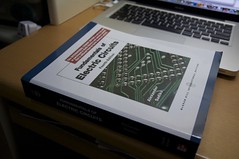Students today are collaborative, communicate with their peers on a highly frequent basis, create, explore, adapt, and design - except when they are in school. Often times when students enter school they are asked to “power down” their phones, computers, and themselves. On their own, students use technology to explore their world and communicate with others. But in their classrooms, many times the option to use those tools is not available to them. In a large portion of these classrooms, the reason isn’t a lack of access, but rather teachers simply aren’t allowing the students to use the tools available to them. This lack of use is usually born out of one thing - fear. A fear that the technology may not work properly, a fear that things may not "go as planned," a fear that the students might abuse the technology, and probably mostly a fear of not being the expert in front of students. While it is okay to be afraid, it is not acceptable to allow that fear to prevent you from creating a more appropriate learning environment for students. Even if nothing works they way you plan and the students end up having to show you how to use the tools, the learning that will occur in that time will be completely worth it. The experience may even allow you to see strengths in your students that you may have never before seen.
If you are reading this post you are probably not tied to your textbook, but I'm willing to bet that you know someone that is. So why not offer up a few ideas to that person that will help them expand a learning environment beyond their classroom walls, or at least beyond the covers of the textbook? Introduce someone to the power of the internet for not only creating more engaging learning environment, but also as a way to extend their own learning network. If you're just starting to explore your options outside of your textbook, seek out another person to either explore with you or someone who could act as a mentor and guide in your journey. Trust me, whether you enter the partnership as a guide or "student" you will find yourself learning from the experience and eager to do more learning and exploring.
A couple of days ago someone on Twitter posted a link to David Warlick's article If you can't use technology get out of teaching! which inspired this post, so thanks to my PLN in Twitter (and David Warlick of course.)
Image courtesy of joewhk and Flickr.

